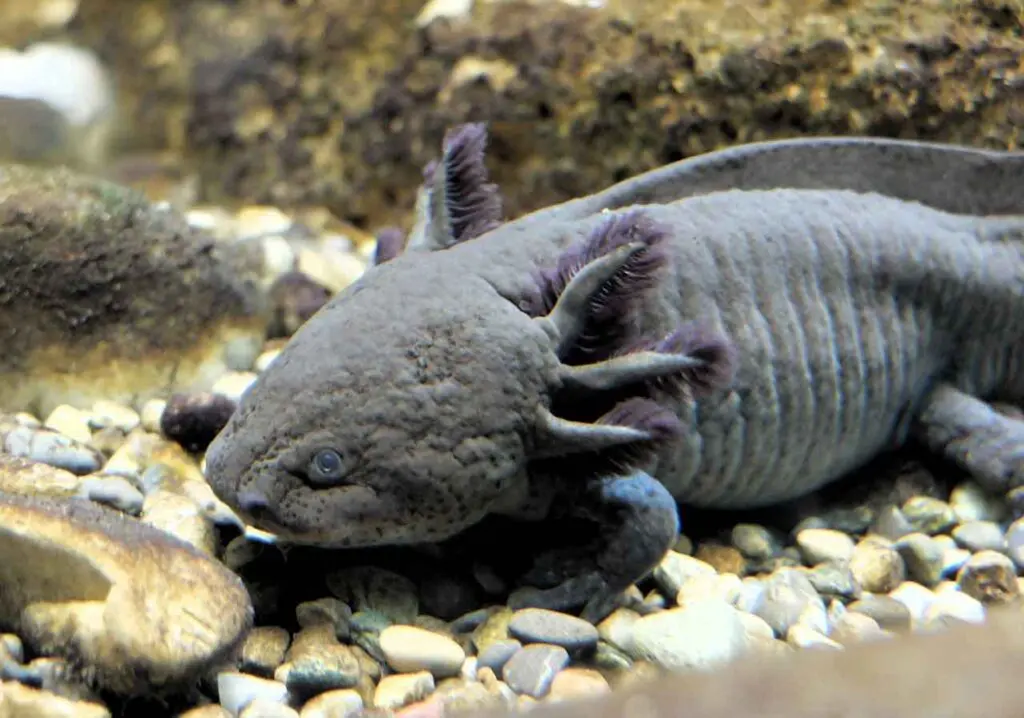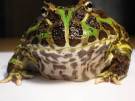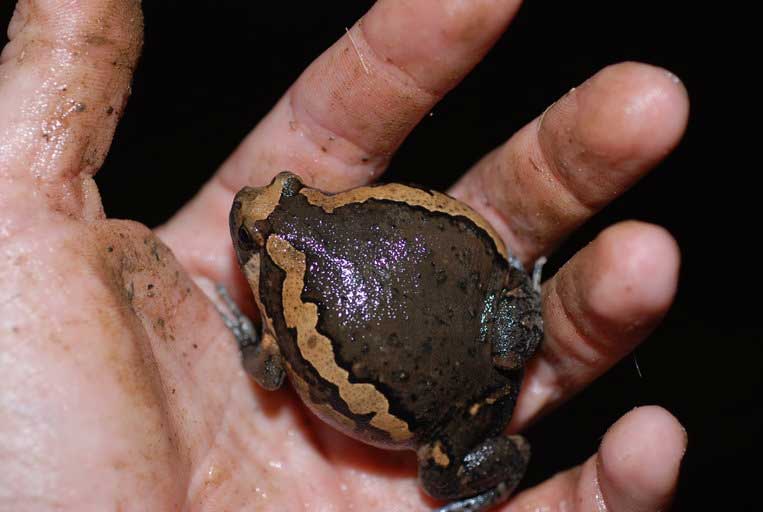Content |
|---|
The Axolotl (Ambystoma mexicanum), member of the family of caudados, found exclusively in a few high-altitude Mexican lakes, Therefore, animals prefer fresh, oxygen-rich waters.. Unlike other caudados, as the common salamander, spends its entire life as a permanent larva in water, breathes throughout its life through external gills and also reaches sexual maturity (neotenia) in this stage. The reason for the absence of metamorphosis - otherwise typical- is a congenital defect of the thyroid gland.
Although Axolotls are in danger of extinction in their natural habitat, have been raised in Europe for many decades, among other things for research purposes. In addition to the naturally mottled dark gray to brown shape, in recent years more and more variants have been bred (color), like albinotic animals (white with red eyes) and leucistic (white with dark eyes), as well as the “Harlequins” white.
Sex differences
Sexually mature animals are distinguished by the cloacal region, which is clearly bulky in the male and flatter in the female.
Behavior
The Axolotl does not show pronounced social behavior. Animals can be kept individually, in pairs or groups, as long as there is enough space, suitable hiding places and structures. If there is a lack of food, bites can come on quickly. Specimens of different sizes should not be kept together, since smaller animals could be seen as food.
The Axolotl they are from twilight to night; in low light they are also daytime.
Suitable accommodation

As the Axolotl does not usually come out of the water, an aquarium of at least 100 x 50 x 50 cm. (length x widht x hight) it is suitable to hold up to 4 adult animals. The water temperature should be 14 to 18 °C, prolonged temperatures above 22 °C will harm animals (may need to be chilled!). An accurate thermometer is needed to measure temperature. Other water values: pH value 6,0 – 8,0, total hardness up to 30 °dGH.
The aquarium must be equipped with a powerful filter with a secured inlet. A good oxygen supply can be ensured by additional aeration. The aquarium must have enough hiding places, for example, wood roots, clay tubes and dense plants. Coarse river pebbles and/or fine sand can be used as a substrate. Aquarium gravel is ingested by those with a sweet tooth along with food and can lead to intestinal obstruction or injury.. Lighting can be dispensed with; if required, a floating green canopy provides the necessary shade. The Axolotl must not live with fish or crustaceans (for example, prawns or crayfish), as they could damage their sensitive external gills.
Nutrition
The Axolotl it is a pure carnivore. They prefer live food, for example, earthworms of various sizes or red gnat larvae. Also accepted as frozen food. Pet stores also offer pellets specially adapted to the needs of pets. Axolotls, that are eaten with pleasure once they have become accustomed to them. Alternatively, sturgeon pellets are also suitable for a full diet of Axolotls.
Caution: the Axolotl tends to become obese. In the case of adult animals, it is enough to feed them every two or three days.
Care

For the operation of an aquarium, a filter of sufficient dimensions is always necessary. The filter should be checked regularly and cleaned if necessary. Axolotls sometimes react sensitively to increased contamination by germs in the water. A regular and weekly partial water change of (at least) the 25 % removes pollutants and increases animal welfare. Regular padding of the substrate also helps reduce water contamination. Warm, stagnant water should be used for water changes; However, water treatment agents should not be used for axolotl.
The most important water parameters for animal welfare -such as temperature, the pH value, ammonium / ammonia, nitrite, nitrate and carbonate and total hardness- should be checked regularly.
Animal health must be monitored daily. The most common health problems in a Axolotl are alterations in the gills and skin, the lesions (by bite) and fat degeneration. If there is any abnormality, consult a veterinarian who is familiar with amphibians.
Acclimatization and handling
When i get home, the first thing to do is turn off the aquarium lighting. Next, The carry bag can be placed on the surface of the water during 10 – 15 minutes to adjust temperature. Next, open the bag and gradually add as much aquarium water as there is transport water in the bag. The Axolotl can then be carefully introduced. For a gentle acclimatization, the light should be turned off until the next morning.
Amphibians are observation animals and NOT companion animals.. In the first days in his new home, animals need adequate rest to get used to their new environment. Slightly deeper, fine mesh nets or appropriately sized containers are suitable for capturing animals. Trapping them by hand should be avoided due to the risk of injury.
Breeding
The Axolotl reaches sexual maturity between 8 and 15 months. In their natural habitats, the mating season occurs in February, when snow melts in the mountains and fresh meltwater temporarily lowers the water temperature of source lakes significantly. In aquariums, Playback may also occur at other times.
The male courtship display is a kind of dance: while the erect tail often makes rapid sinuous movements, the body is bent. Next, one or more spermatophores are deposited on the ground. The female collects them with her cloaca. Spawning takes place a few hours later. Eggs adhere preferentially to the leaves of aquatic plants. A set consists of between 80 and 800 eggs.
The larvae hatch after a few 15 to 20 days of embryonic development, depending on the temperature. At the beginning, they feed on its yolk for another two days before going off to find food on their own.
Special features
All the Axolotls that are offered in trade are offspring. The Axolotls they are protected species, but they are not subject to registration; However, proof of origin is required.
The Axolotls can regenerate injured and lost limbs. But, these lesions always indicate a bad breeding. If the characteristic tufted external gills recede, experience has shown that there are breeding errors, for example, too high temperatures or too much water stress.
The care of Axolotl only makes sense if the required low temperatures are guaranteed also in summer, for example, in a cool cellar or using an aquarium cooler.
The Axolotl lays eggs more often, even without specific breeding intentions. Larvae should only be reared if the right buyers are known in advance.

































